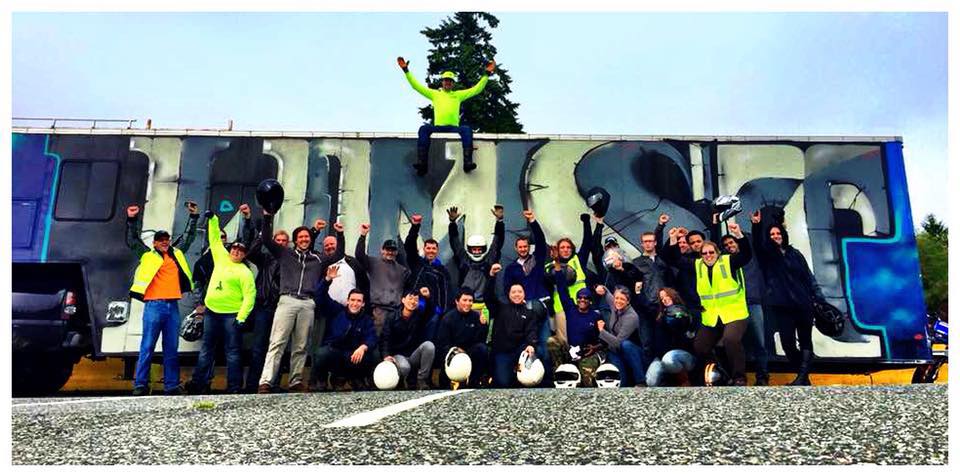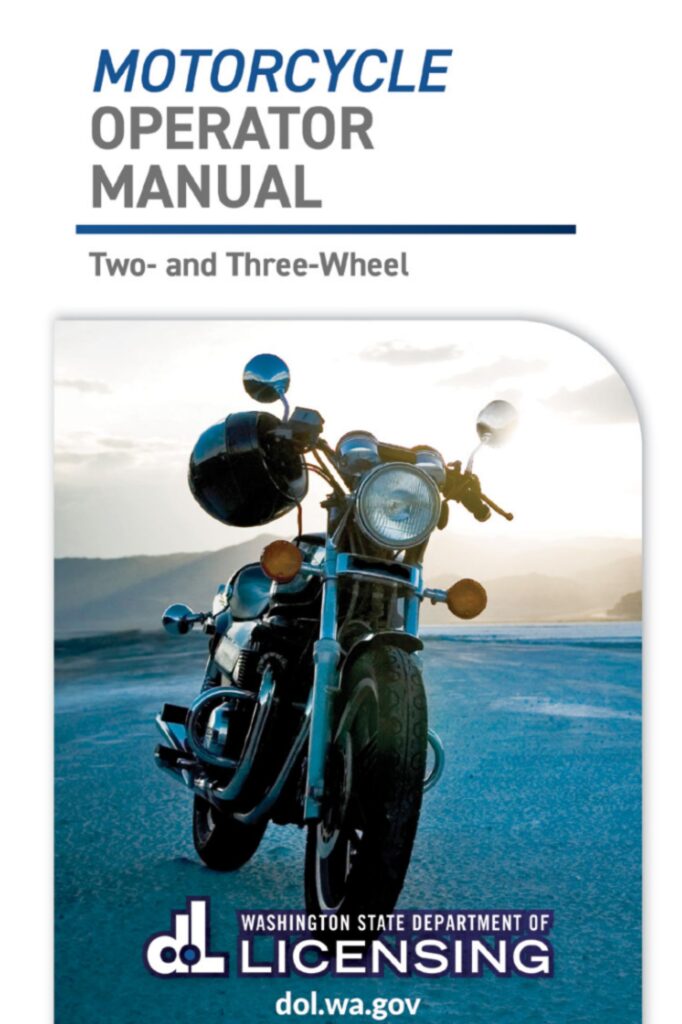Welcome to the
Motorcycle Community
Washington Motorcycle Safety Training
Questions or Concerns?
We look forward to hearing from you.
- Motorcycle@GoWMST.com
- (360)435-1600
Your Best Ride, Every Ride
It’s crucial that new and experienced riders prioritize safety and employ best practices.
- Get Training: Take a motorcycle safety course to learn essential riding skills and safety techniques.
- Get Permitted and Endorsend: Earn and then add your permit and endorsement to your license.
- Wear Protective Gear: Always wear appropriate protective gear, including a helmet, gloves, jacket, pants, and boots. Choose gear with high visibility for added safety.
- Ride the Right Motorcycle: Choose a motorcycle that is appropriate for you. Consider the weight, power, seat height and riding position.
- Know The Bike: Be familiar with the controls, brakes, clutch, throttle and gears.
- Practice Basic Skills: Keep fine tuning basic maneuvers in controlled environments to enhance your handling skills.
- Be a Defensive Rider: Assume others may not see you and ride defensively. Keep a safe follwing distance and stay aware of your surroundings.
- Weather Awareness: Consider how the weather can affect your ride. Adjust your speed and riding style.
- Be Seen: Use your headlights, wear reflective gear and position yourself in a way that makes you visible to other drivers.
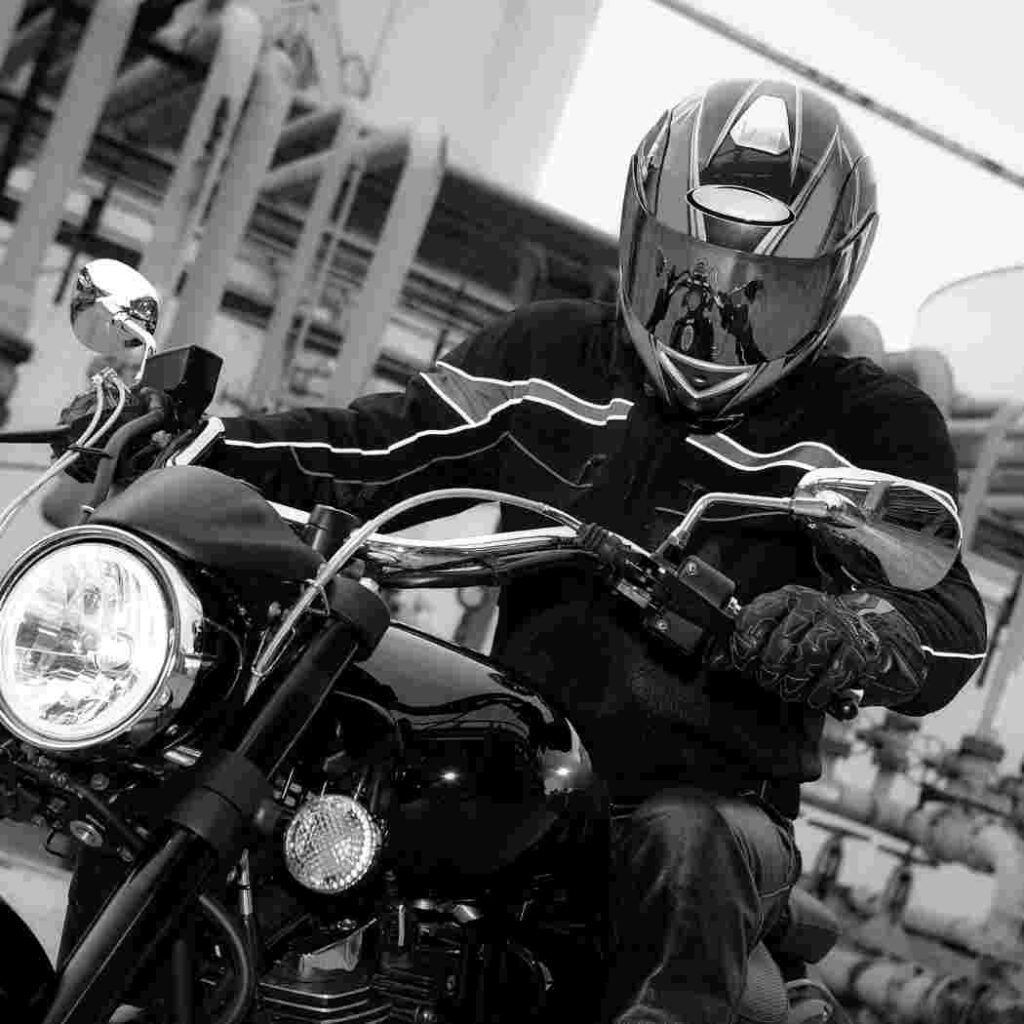
- Obey the Law: Be aware of speed limits, road signs, follow all traffic rules and regulations.
- Never Ride When You’re Impaired: You need sharpened senses when you are riding. Never ride when you’re under the influence of alcohol or drugs or experiencing unusual stress.
- Keep Your Motorcycle Well Maintained: Routinely check tires, brakes, chain or belt, kickstand, lights, blinkers, controls, oil, fluids and battery connections.
- Never Stop Learnng: Contiuiously improving your skills and staying vigilant on the road will contribute to a safer and more enjoyable riding experience. Take an advanced course to reach your full riding potentail.
WMST Instructors are the key to our success
Do you have a passion for riding? Would it be rewarding to be an advocate for the sport and motorcycle safety. Do you want to have a positive impact on individuals through teaching?
Join us in our mission to save lives.
T-CLOCK Inspection
A T-CLOCK inspection is a systematic way to check various components of a motorcycle before riding, ensuring that it is in good working condition. T-CLOCK stands for Tires, Controls, Lights, Oil, Chassis, and Kickstand.
Here’s how to conduct a T-CLOCK inspection:
Tires:
Check the tire pressure using a gauge and ensure it is within the recommended range. Inspect tires for any visible damage, cuts, or bulges. Verify that the tread depth meets safety standards. Look for any embedded objects like nails or screws.
Controls:
Test the throttle to ensure smooth and responsive operation. Check the clutch and brake levers for proper play and functionality. Verify that the front and rear brakes are working correctly. Ensure handlebars move freely without resistance.
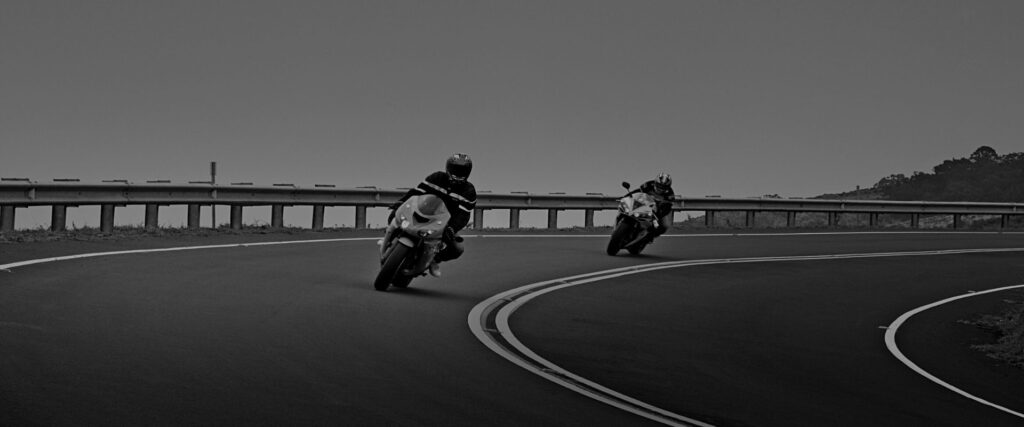
Lights:
Turn on the ignition and check that all lights are working, including headlights, taillights, brake lights, and turn signals.
Inspect the condition of the light lenses.
Oil:
Check the oil level using the motorcycle’s dipstick or sight glass.
Ensure there are no oil leaks around the engine.
Chassis:
Inspect the frame for any visible damage, cracks, or signs of stress. Check for loose or missing bolts on the chassis.
Examine the suspension for leaks, damage, or proper travel.
Kickstand:
Ensure the kickstand operates smoothly and fully retracts when lifted. Verify that the kickstand switch (if applicable) is functioning correctly.
Performing this T-CLOCK inspection before every ride can help you identify potential issues and ensure that your motorcycle is safe and roadworthy. If you discover any problems during the inspection, address them promptly before riding. Regular maintenance and inspections contribute to the overall safety and performance of your motorcycle.
RCW 46.04.330 – Definition of motorcycle
RCW 46.16A.200 – One Horizontal Plate
RCW 46.20.100 – under 18-years old permission and training
RCW 20.500 – Endorsement requirements
RCW 46.20.505 – Endorsement fees
RCW 46.20.515 – Skills testing
RCW 46.20.520 – Safety education
RCW 46.30.020 – Liability insurance required
RCW 46.37.522 – Running lights
RCW 46.37.523 – Headlights
RCW 46.37.525 – Lamps
RCW 46.37.527 – Brakes
RCW 46.37.528 – Stopping standards
RCW 46.37.530 – Mirrors, eye protection, children 5+ Years, DOT helmet and strap
RCW 46.37.535 – Helmet when renting
RCW 46.37.537 – No modified exhaust
RCW 46.37.539 – Horn Muffler mirrors tires
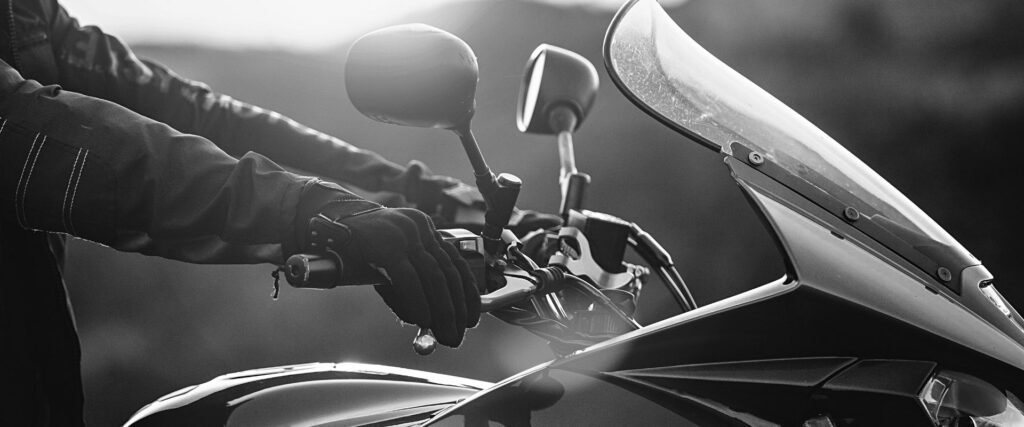
RCW 46.61.120 – Overtaking on left
RCW 46.61.460 – Headlight required speed over 35 miles per hour
RCW 46.61.608 – No lane splitting, one vehicle per lane, two motorcycles per lane
RCW 46.61.610 – Passenger seat and pegs
RCW 46.61.611 – Bar height<30″ above seat
RCW 46.61.612 – Leg on each side of motorcycle
RCW 46.61.613 – Motorcycle restrictions suspended for parade
RCW 46.61.614 – Can’t attach to other vehicles
RCW 46.61.660 – Passengers and animals
RCW 46.61.670 – Can’t ride off side of road
WAC 468.510.010 – Motorcycles permitted in HOV
When finishing a motorcycle ride, several important things should be considered:
Parking: Choose a safe and designated parking spot for your motorcycle. Ensure that it’s in a legal parking space and won’t obstruct traffic or pedestrians.
Secure the Motorcycle: Use the motorcycle’s built-in security features, such as the steering lock, and consider using additional locks or chains if necessary. This helps prevent theft.
Check for Damage: Inspect your motorcycle for any signs of damage or issues. This includes checking for leaks, tire damage, and any loose or missing parts.
Fuel Level: Be aware of your fuel level. Ensure you have enough fuel for your next ride, or plan to refuel if needed.
Maintenance: Regularly maintain your motorcycle by following the manufacturer’s recommendations for service intervals. This helps ensure the bike is in good working condition.
Weather Conditions: Consider the weather conditions for your next ride. Check the forecast and make any necessary adjustments to your gear or route.
Stowing Items: If you’ve carried any items during your ride, make sure they are properly stowed and secured. This prevents them from falling off during the next ride.
Reflect on the Ride: Reflect on the ride, especially if it was a long journey or if you encountered challenging conditions. Assess your performance and learn from the experience.
Plan for the Next Ride: If you plan to ride again soon, consider planning your next route, checking the weather, and ensuring your motorcycle is ready for the next adventure.
To prevent motorcycle theft, consider the following practices:
Locks and Chains: Use a sturdy disc lock on the brake rotor to prevent the wheel from turning.Secure the motorcycle with a heavy-duty chain or cable lock to a fixed object, such as a post or bike rack.
Steering Lock: Always engage the steering lock when parking your motorcycle.
Garage or Secure Parking: Park your motorcycle in a well-lit and busy area.
If possible, store it in a garage or secured parking facility.
Security Alarms: Install a motorcycle alarm system with motion sensors and a loud siren to deter thieves.
Tracking Devices: Consider installing a GPS tracking device on your motorcycle. This can help locate it in case of theft.
Cover Your Motorcycle: Use a motorcycle cover to keep your bike discreet and protect it from prying eyes.
Remove Valuables: Take any valuables, such as helmets or GPS devices, with you when leaving the motorcycle.
Secure Ignition: Ensure that your motorcycle has a secure ignition system. Consider using additional locks or ignition immobilizers.

Secure Parking: When parking in public places, choose locations with security cameras and high visibility.
Join Anti-Theft Programs: Participate in motorcycle anti-theft programs or use community-based security initiatives.
Insurance: Have comprehensive motorcycle insurance that covers theft. This can provide financial protection in case of theft.
Regular Maintenance: Keep your motorcycle well-maintained, as a well-cared-for bike is less attractive to thieves.
Be Vigilant: Be aware of your surroundings and report suspicious activities to law enforcement.
By implementing these best practices, you can significantly reduce the risk of motorcycle theft and enhance the security of your bike.
Group Rides
When planning a group motorcycle ride, there are several important factors to consider to ensure safety, enjoyment, and smooth coordination.
Route Planning:
- Choose a route that is suitable for all riders in terms of skill level and comfort.
- Consider road conditions, traffic patterns, and potential construction or hazards along the way.
- Plan rest stops at regular intervals to allow for breaks and to regroup.
Communication:
- Establish a method of communication among riders, such as using motorcycle intercom systems, hand signals, or Bluetooth communication devices.
- Designate a lead rider and a sweep rider to maintain group cohesion and assist with navigation and potential issues.
Safety Gear:
- Emphasize the importance of wearing appropriate safety gear, including helmets, gloves, jackets, and sturdy footwear, to all participants.
- Ensure that all motorcycles are in good working condition and have undergone proper maintenance checks before the ride.

Group Size:
- Keep the group size manageable to facilitate communication and coordination.
- Larger groups may require more planning and organization to ensure everyone stays together and follows the route safely.
Rider Skill Levels:
- Consider the skill levels and experience of the riders in the group when planning the route and pace of the ride.
- Encourage less experienced riders to ride towards the front of the group, where they can follow the lead rider and receive guidance if needed.
Weather Conditions:
- Monitor weather forecasts leading up to the ride and be prepared to adjust plans if inclement weather is expected.
- Ensure that all riders are dressed appropriately for the weather conditions and have rain gear if necessary.
Emergency Preparedness:
- Have a plan in place for handling emergencies, such as breakdowns, accidents, or medical issues.
- Ensure that all riders know how to contact emergency services and have access to basic first aid supplies.
Respect Local Laws and Regulations:
- Familiarize yourself with local traffic laws and regulations along the route, including speed limits and rules regarding group riding.
- Encourage all participants to ride responsibly and obey all traffic laws to ensure a safe and enjoyable experience for everyone.


